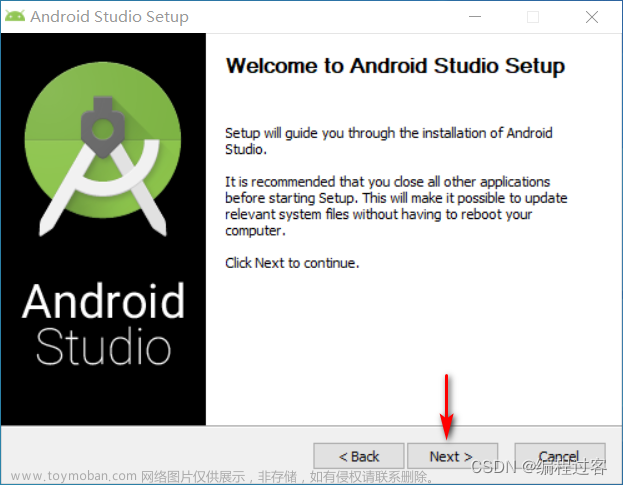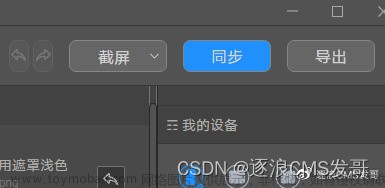1、PowerUI是系统中控制电量提示的模块,低电量提醒、低电量关机提醒、高温关机提醒、省电模式都在其中实现
SystemUIService 中启动PowerUI
public class SystemUIService extends Service {
@Override
public void onCreate() {
super.onCreate();
((SystemUIApplication) getApplication()).startServicesIfNeeded();
// For debugging RescueParty
if (Build.IS_DEBUGGABLE && SystemProperties.getBoolean("debug.crash_sysui", false)) {
throw new RuntimeException();
}
if (Build.IS_DEBUGGABLE) {
// b/71353150 - looking for leaked binder proxies
BinderInternal.nSetBinderProxyCountEnabled(true);
BinderInternal.nSetBinderProxyCountWatermarks(1000,900);
BinderInternal.setBinderProxyCountCallback(
new BinderInternal.BinderProxyLimitListener() {
@Override
public void onLimitReached(int uid) {
Slog.w(SystemUIApplication.TAG,
"uid " + uid + " sent too many Binder proxies to uid "
+ Process.myUid());
}
}, Dependency.get(Dependency.MAIN_HANDLER));
}
}
在SystemUIService 启动时,启动SystemUIApplication的startServicesIfNeeded() 来启动SystemUI的各种服务
在SystemUIApplication中 启动PowerUI
config.xml 中config_systemUIServiceComponents
<string-array name="config_systemUIServiceComponents" translatable="false">
<item>com.android.systemui.Dependency$DependencyCreator</item>
<item>com.android.systemui.util.NotificationChannels</item>
<item>com.android.systemui.statusbar.CommandQueue$CommandQueueStart</item>
<item>com.android.systemui.keyguard.KeyguardViewMediator</item>
<item>com.android.systemui.recents.Recents</item>
<item>com.android.systemui.volume.VolumeUI</item>
<item>com.android.systemui.stackdivider.Divider</item>
<item>com.android.systemui.SystemBars</item>
<item>com.android.systemui.usb.StorageNotification</item>
<item>com.android.systemui.power.PowerUI</item>
<item>com.android.systemui.media.RingtonePlayer</item>
<item>com.android.systemui.keyboard.KeyboardUI</item>
<item>com.android.systemui.pip.PipUI</item>
<item>com.android.systemui.shortcut.ShortcutKeyDispatcher</item>
<item>@string/config_systemUIVendorServiceComponent</item>
<item>com.android.systemui.util.leak.GarbageMonitor$Service</item>
<item>com.android.systemui.LatencyTester</item>
<item>com.android.systemui.globalactions.GlobalActionsComponent</item>
<item>com.android.systemui.ScreenDecorations</item>
<item>com.android.systemui.biometrics.BiometricDialogImpl</item>
<item>com.android.systemui.SliceBroadcastRelayHandler</item>
<item>com.android.systemui.SizeCompatModeActivityController</item>
<item>com.android.systemui.statusbar.notification.InstantAppNotifier</item>
<item>com.android.systemui.theme.ThemeOverlayController</item>
</string-array>
/**
* Makes sure that all the SystemUI services are running. If they are already running, this is a
* no-op. This is needed to conditinally start all the services, as we only need to have it in
* the main process.
* <p>This method must only be called from the main thread.</p>
*/
public void startServicesIfNeeded() {
String[] names = SystemUIFactory.getInstance().getSystemUIServiceComponents(getResources());
startServicesIfNeeded(/* metricsPrefix= */ "StartServices", names);
}
SystemUIFactory的getSystemUIServiceComponents(Resources resources)
public String[] getSystemUIServiceComponents(Resources resources) {
return resources.getStringArray(R.array.config_systemUIServiceComponents);
}
private void startServicesIfNeeded(String[] services) {
if (mServicesStarted) {
return;
}
mServices = new SystemUI[services.length];
if (!mBootCompleted) {
// check to see if maybe it was already completed long before we began
// see ActivityManagerService.finishBooting()
if ("1".equals(SystemProperties.get("sys.boot_completed"))) {
mBootCompleted = true;
if (DEBUG) Log.v(TAG, "BOOT_COMPLETED was already sent");
}
}
Log.v(TAG, "Starting SystemUI services for user " +
Process.myUserHandle().getIdentifier() + ".");
TimingsTraceLog log = new TimingsTraceLog("SystemUIBootTiming",
Trace.TRACE_TAG_APP);
log.traceBegin("StartServices");
final int N = services.length;
for (int i = 0; i < N; i++) {
String clsName = services[i];
if (DEBUG) Log.d(TAG, "loading: " + clsName);
log.traceBegin("StartServices" + clsName);
long ti = System.currentTimeMillis();
Class cls;
try {
cls = Class.forName(clsName);
Object o = cls.newInstance();
if (o instanceof SystemUI.Injector) {
o = ((SystemUI.Injector) o).apply(this);
}
mServices[i] = (SystemUI) o;
} catch(ClassNotFoundException ex){
throw new RuntimeException(ex);
} catch (IllegalAccessException ex) {
throw new RuntimeException(ex);
} catch (InstantiationException ex) {
throw new RuntimeException(ex);
}
mServices[i].mContext = this;
mServices[i].mComponents = mComponents;
if (DEBUG) Log.d(TAG, "running: " + mServices[i]);
mServices[i].start();
log.traceEnd();
// Warn if initialization of component takes too long
ti = System.currentTimeMillis() - ti;
if (ti > 1000) {
Log.w(TAG, "Initialization of " + cls.getName() + " took " + ti + " ms");
}
if (mBootCompleted) {
mServices[i].onBootCompleted();
}
}
Dependency.get(InitController.class).executePostInitTasks();
log.traceEnd();
final Handler mainHandler = new Handler(Looper.getMainLooper());
Dependency.get(PluginManager.class).addPluginListener(
new PluginListener<OverlayPlugin>() {
private ArraySet<OverlayPlugin> mOverlays = new ArraySet<>();
@Override
public void onPluginConnected(OverlayPlugin plugin, Context pluginContext) {
mainHandler.post(new Runnable() {
@Override
public void run() {
StatusBar statusBar = getComponent(StatusBar.class);
if (statusBar != null) {
plugin.setup(statusBar.getStatusBarWindow(),
statusBar.getNavigationBarView(), new Callback(plugin));
}
}
});
}
@Override
public void onPluginDisconnected(OverlayPlugin plugin) {
mainHandler.post(new Runnable() {
@Override
public void run() {
mOverlays.remove(plugin);
Dependency.get(StatusBarWindowController.class).setForcePluginOpen(
mOverlays.size() != 0);
}
});
}
class Callback implements OverlayPlugin.Callback {
private final OverlayPlugin mPlugin;
Callback(OverlayPlugin plugin) {
mPlugin = plugin;
}
@Override
public void onHoldStatusBarOpenChange() {
if (mPlugin.holdStatusBarOpen()) {
mOverlays.add(mPlugin);
} else {
mOverlays.remove(mPlugin);
}
mainHandler.post(new Runnable() {
@Override
public void run() {
Dependency.get(StatusBarWindowController.class)
.setStateListener(b -> mOverlays.forEach(
o -> o.setCollapseDesired(b)));
Dependency.get(StatusBarWindowController.class)
.setForcePluginOpen(mOverlays.size() != 0);
}
});
}
}
}, OverlayPlugin.class, true /* Allow multiple plugins */);
mServicesStarted = true;
}
2、PowerUI 电量的分析
public void start() {
mPowerManager = (PowerManager) mContext.getSystemService(Context.POWER_SERVICE);
mScreenOffTime = mPowerManager.isScreenOn() ? -1 : SystemClock.elapsedRealtime();
mWarnings = Dependency.get(WarningsUI.class);
mEnhancedEstimates = Dependency.get(EnhancedEstimates.class);
mLastConfiguration.setTo(mContext.getResources().getConfiguration());
ContentObserver obs = new ContentObserver(mHandler) {
@Override
public void onChange(boolean selfChange) {
updateBatteryWarningLevels();
}
};
final ContentResolver resolver = mContext.getContentResolver();
resolver.registerContentObserver(Settings.Global.getUriFor(
Settings.Global.LOW_POWER_MODE_TRIGGER_LEVEL),
false, obs, UserHandle.USER_ALL);
updateBatteryWarningLevels();
mReceiver.init();
// Check to see if we need to let the user know that the phone previously shut down due
// to the temperature being too high.
showWarnOnThermalShutdown();
// Register an observer to configure mEnableSkinTemperatureWarning and perform the
// registration of skin thermal event listener upon Settings change.
resolver.registerContentObserver(
Settings.Global.getUriFor(Settings.Global.SHOW_TEMPERATURE_WARNING),
false /*notifyForDescendants*/,
new ContentObserver(mHandler) {
@Override
public void onChange(boolean selfChange) {
doSkinThermalEventListenerRegistration();
}
});
// Register an observer to configure mEnableUsbTemperatureAlarm and perform the
// registration of usb thermal event listener upon Settings change.
resolver.registerContentObserver(
Settings.Global.getUriFor(Settings.Global.SHOW_USB_TEMPERATURE_ALARM),
false /*notifyForDescendants*/,
new ContentObserver(mHandler) {
@Override
public void onChange(boolean selfChange) {
doUsbThermalEventListenerRegistration();
}
});
initThermalEventListeners();
mCommandQueue.addCallback(this);
}
@VisibleForTesting
final class Receiver extends BroadcastReceiver {
private boolean mHasReceivedBattery = false;
public void init() {
// Register for Intent broadcasts for...
IntentFilter filter = new IntentFilter();
filter.addAction(PowerManager.ACTION_POWER_SAVE_MODE_CHANGED);
filter.addAction(Intent.ACTION_BATTERY_CHANGED);
filter.addAction(Intent.ACTION_SCREEN_OFF);
filter.addAction(Intent.ACTION_SCREEN_ON);
filter.addAction(Intent.ACTION_USER_SWITCHED);
mBroadcastDispatcher.registerReceiverWithHandler(this, filter, mHandler);
// Force get initial values. Relying on Sticky behavior until API for getting info.
if (!mHasReceivedBattery) {
// Get initial state
Intent intent = mContext.registerReceiver(
null,
new IntentFilter(Intent.ACTION_BATTERY_CHANGED)
);
if (intent != null) {
onReceive(mContext, intent);
}
}
}
@Override
public void onReceive(Context context, Intent intent) {
String action = intent.getAction();
if (PowerManager.ACTION_POWER_SAVE_MODE_CHANGED.equals(action)) {
ThreadUtils.postOnBackgroundThread(() -> {
if (mPowerManager.isPowerSaveMode()) {
mWarnings.dismissLowBatteryWarning();
}
});
} else if (Intent.ACTION_BATTERY_CHANGED.equals(action)) {
mHasReceivedBattery = true;
final int oldBatteryLevel = mBatteryLevel;
mBatteryLevel = intent.getIntExtra(BatteryManager.EXTRA_LEVEL, 100);
final int oldBatteryStatus = mBatteryStatus;
mBatteryStatus = intent.getIntExtra(BatteryManager.EXTRA_STATUS,
BatteryManager.BATTERY_STATUS_UNKNOWN);
final int oldPlugType = mPlugType;
mPlugType = intent.getIntExtra(BatteryManager.EXTRA_PLUGGED, 1);
final int oldInvalidCharger = mInvalidCharger;
mInvalidCharger = intent.getIntExtra(BatteryManager.EXTRA_INVALID_CHARGER, 0);
mLastBatteryStateSnapshot = mCurrentBatteryStateSnapshot;
final boolean plugged = mPlugType != 0;
final boolean oldPlugged = oldPlugType != 0;
int oldBucket = findBatteryLevelBucket(oldBatteryLevel);
int bucket = findBatteryLevelBucket(mBatteryLevel);
if (DEBUG) {
Slog.d(TAG, "buckets ....." + mLowBatteryAlertCloseLevel
+ " .. " + mLowBatteryReminderLevels[0]
+ " .. " + mLowBatteryReminderLevels[1]);
Slog.d(TAG, "level " + oldBatteryLevel + " --> " + mBatteryLevel);
Slog.d(TAG, "status " + oldBatteryStatus + " --> " + mBatteryStatus);
Slog.d(TAG, "plugType " + oldPlugType + " --> " + mPlugType);
Slog.d(TAG, "invalidCharger " + oldInvalidCharger + " --> " + mInvalidCharger);
Slog.d(TAG, "bucket " + oldBucket + " --> " + bucket);
Slog.d(TAG, "plugged " + oldPlugged + " --> " + plugged);
}
mWarnings.update(mBatteryLevel, bucket, mScreenOffTime);
if (oldInvalidCharger == 0 && mInvalidCharger != 0) {
Slog.d(TAG, "showing invalid charger warning");
mWarnings.showInvalidChargerWarning();
return;
} else if (oldInvalidCharger != 0 && mInvalidCharger == 0) {
mWarnings.dismissInvalidChargerWarning();
} else if (mWarnings.isInvalidChargerWarningShowing()) {
// if invalid charger is showing, don't show low battery
if (DEBUG) {
Slog.d(TAG, "Bad Charger");
}
return;
}
// Show the correct version of low battery warning if needed
if (mLastShowWarningTask != null) {
mLastShowWarningTask.cancel(true);
if (DEBUG) {
Slog.d(TAG, "cancelled task");
}
}
//
mLastShowWarningTask = ThreadUtils.postOnBackgroundThread(() -> {
maybeShowBatteryWarningV2(
plugged, bucket);
});
} else if (Intent.ACTION_SCREEN_OFF.equals(action)) {
mScreenOffTime = SystemClock.elapsedRealtime();
} else if (Intent.ACTION_SCREEN_ON.equals(action)) {
mScreenOffTime = -1;
} else if (Intent.ACTION_USER_SWITCHED.equals(action)) {
mWarnings.userSwitched();
} else {
Slog.w(TAG, "unknown intent: " + intent);
}
}
}
在PowerUI的start()方法中启动广播监听电量变化
mLastShowWarningTask = ThreadUtils.postOnBackgroundThread(() -> {
maybeShowBatteryWarningV2(
plugged, bucket);
});
来判断是否开启低电量警告
protected void maybeShowBatteryWarningV2(boolean plugged, int bucket) {
final boolean hybridEnabled = mEnhancedEstimates.isHybridNotificationEnabled();
final boolean isPowerSaverMode = mPowerManager.isPowerSaveMode();
// Stick current battery state into an immutable container to determine if we should show
// a warning.
if (DEBUG) {
Slog.d(TAG, "evaluating which notification to show");
}
if (hybridEnabled) {
if (DEBUG) {
Slog.d(TAG, "using hybrid");
}
Estimate estimate = refreshEstimateIfNeeded();
mCurrentBatteryStateSnapshot = new BatteryStateSnapshot(mBatteryLevel, isPowerSaverMode,
plugged, bucket, mBatteryStatus, mLowBatteryReminderLevels[1],
mLowBatteryReminderLevels[0], estimate.getEstimateMillis(),
estimate.getAverageDischargeTime(),
mEnhancedEstimates.getSevereWarningThreshold(),
mEnhancedEstimates.getLowWarningThreshold(), estimate.isBasedOnUsage(),
mEnhancedEstimates.getLowWarningEnabled());
} else {
if (DEBUG) {
Slog.d(TAG, "using standard");
}
mCurrentBatteryStateSnapshot = new BatteryStateSnapshot(mBatteryLevel, isPowerSaverMode,
plugged, bucket, mBatteryStatus, mLowBatteryReminderLevels[1],
mLowBatteryReminderLevels[0]);
}
mWarnings.updateSnapshot(mCurrentBatteryStateSnapshot);
if (mCurrentBatteryStateSnapshot.isHybrid()) {
maybeShowHybridWarning(mCurrentBatteryStateSnapshot, mLastBatteryStateSnapshot);
} else {
//低电量警告
maybeShowBatteryWarning(mCurrentBatteryStateSnapshot, mLastBatteryStateSnapshot);
}
protected void maybeShowBatteryWarning(
BatteryStateSnapshot currentSnapshot,
BatteryStateSnapshot lastSnapshot) {
final boolean playSound = currentSnapshot.getBucket() != lastSnapshot.getBucket()
|| lastSnapshot.getPlugged();
if (shouldShowLowBatteryWarning(currentSnapshot, lastSnapshot)) {
mWarnings.showLowBatteryWarning(playSound);//低电量警告
} else if (shouldDismissLowBatteryWarning(currentSnapshot, lastSnapshot)) {
mWarnings.dismissLowBatteryWarning();//去掉低电量警告
} else {
mWarnings.updateLowBatteryWarning();
}
}
PowerNotificationWarnings.java的低电量提醒方法
@Override
public void showLowBatteryWarning(boolean playSound) {
Slog.i(TAG,
"show low battery warning: level=" + mBatteryLevel
+ " [" + mBucket + "] playSound=" + playSound);
mPlaySound = playSound;
mWarning = true;
updateNotification();
}
}
3、增加低电量的弹窗 PowerNotificationWarnings.java的showLowBatteryWarning()方法
import android.app.AlertDialog;
import android.view.WindowManager;
import android.content.DialogInterface;
private AlertDialog mbatteryLowDialog = null;
// 自定义电池温度Dialog弹窗
private void batterylowDialog(String lowbattery) {
mbatteryLowDialog = new AlertDialog(mContext);
AlertDialog.Builder builder = new AlertDialog.Builder(mContext);
builder.setTitle(mContext.getResources().getString(
com.android.internal.R.string.lowbatteryWarning));
builder.setCancelable(false);
builder.setMessage(lowbattery);
builder.setIconAttribute(android.R.attr.alertDialogIcon);
builder.setPositiveButton(com.android.internal.R.string.batteryLow111,
new DialogInterface.OnClickListener() {
public void onClick(DialogInterface dialog, int id) {
dialog.cancel();
mbatteryLowDialog = null;
}
});
mbatteryLowDialog = builder.create();
mbatteryLowDialog.getWindow().setType(
WindowManager.LayoutParams.TYPE_SYSTEM_ALERT);
if (mbatteryLowDialog != null&& !mbatteryLowDialog.isShowing()) {
mbatteryLowDialog.show();
}
}
@Override
public void showLowBatteryWarning(boolean playSound) {
Slog.i(TAG,
"show low battery warning: level=" + mBatteryLevel
+ " [" + mBucket + "] playSound=" + playSound);
mPlaySound = playSound;
mWarning = true;
updateNotification();
+ batterylowDialog("低电量")
}
4、增加低电量提醒的xml资源
主要修改文章来源:https://www.toymoban.com/news/detail-839966.html
frameworks/base/core/res/res/values/string.xml
<?xml version="1.0" encoding="utf-8"?>
<resources xmlns:xliff="urn:oasis:names:tc:xliff:document:1.2">
... ...
<!-- Shutdown if the battery temperature exceeds (this value * 0.1) Celsius. -->
<string name="lowbatteryWarning">低电量提醒</integer>
<!-- add code begin-->
<string name="batteryLow111">111</integer>
<!-- add code end-->
... ...
</resources>
5、在symbols 文件中添加对应java-symbol方便Framework代码引用code文章来源地址https://www.toymoban.com/news/detail-839966.html
在symbols文件中为全部string,int值注册,方便Framework层代码的引用。
frameworks/base/core/res/res/values/symbols.xml
<?xml version="1.0" encoding="utf-8"?>
<resources>
<!-- Private symbols that we need to reference from framework code. See
frameworks/base/core/res/MakeJavaSymbols.sed for how to easily generate
this.
Can be referenced in java code as: com.android.internal.R.<type>.<name>
and in layout xml as: "@*android:<type>/<name>"
-->
<!-- add code begin-->
<java-symbol type="string" name="lowbatteryWarning" />
<java-symbol type="string" name="batteryLow111" />
到了这里,关于Android 11 系统开发增加低电量弹窗提示 手机 平板 车载 TV 投影 通用的文章就介绍完了。如果您还想了解更多内容,请在右上角搜索TOY模板网以前的文章或继续浏览下面的相关文章,希望大家以后多多支持TOY模板网!












